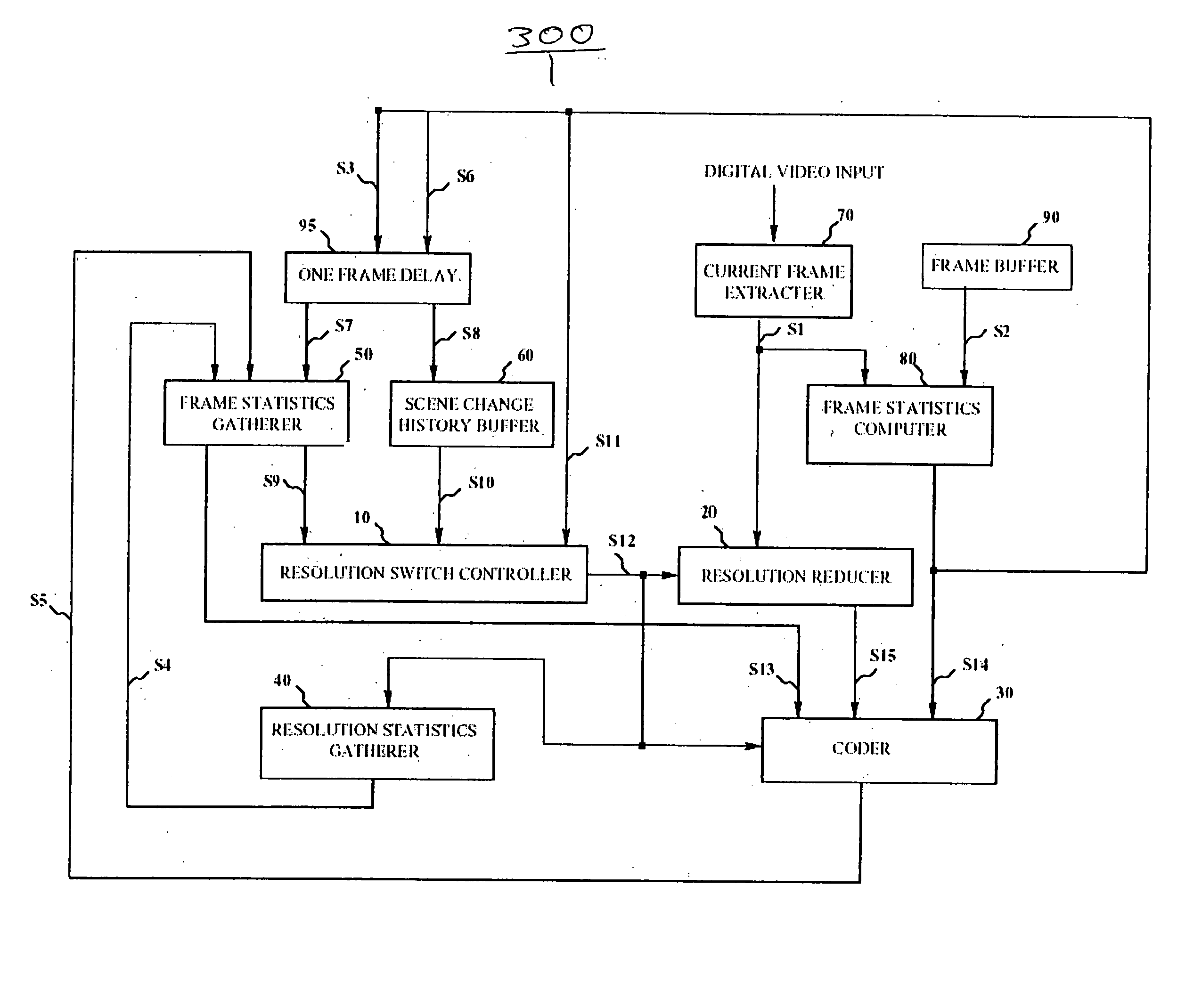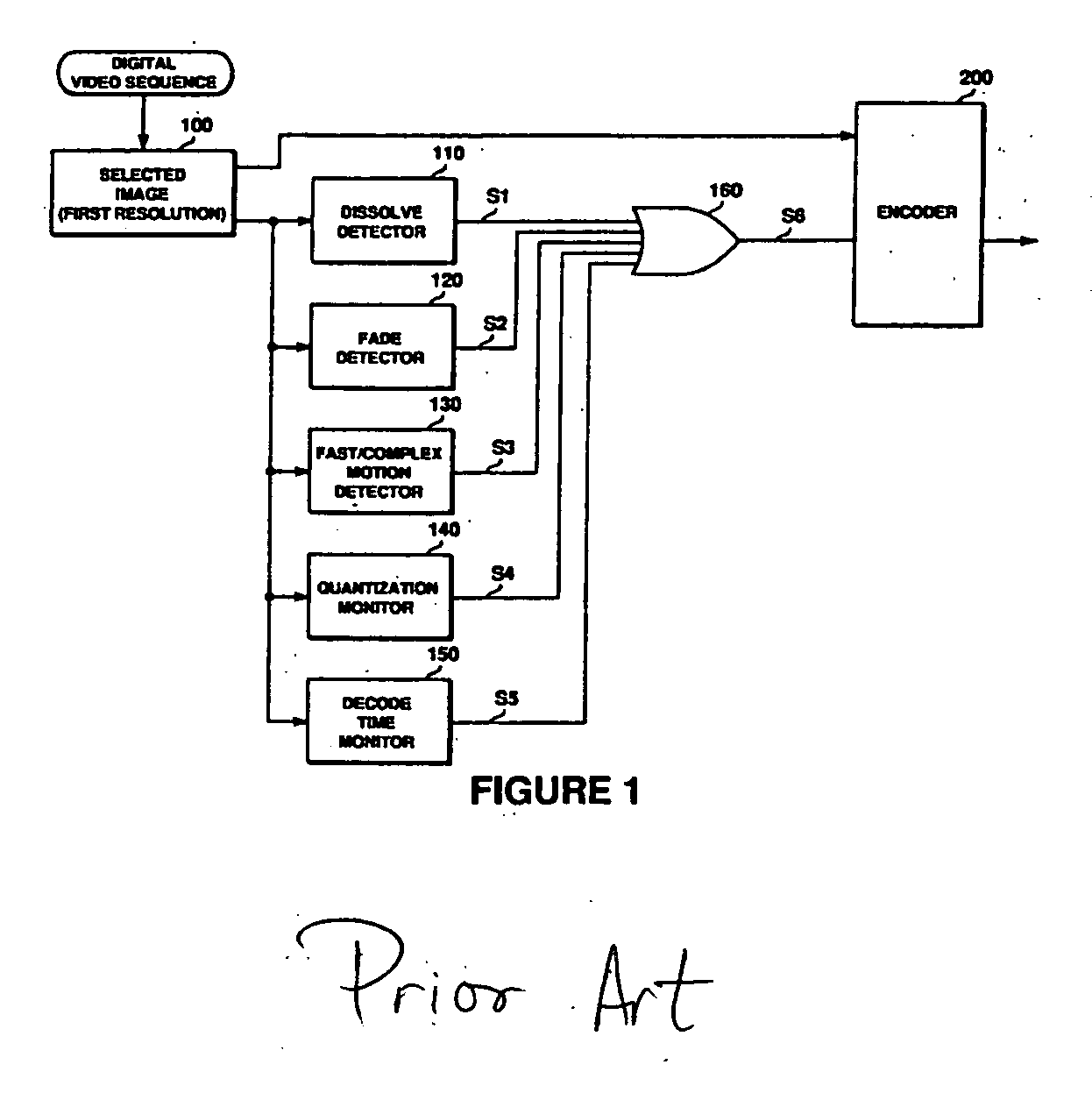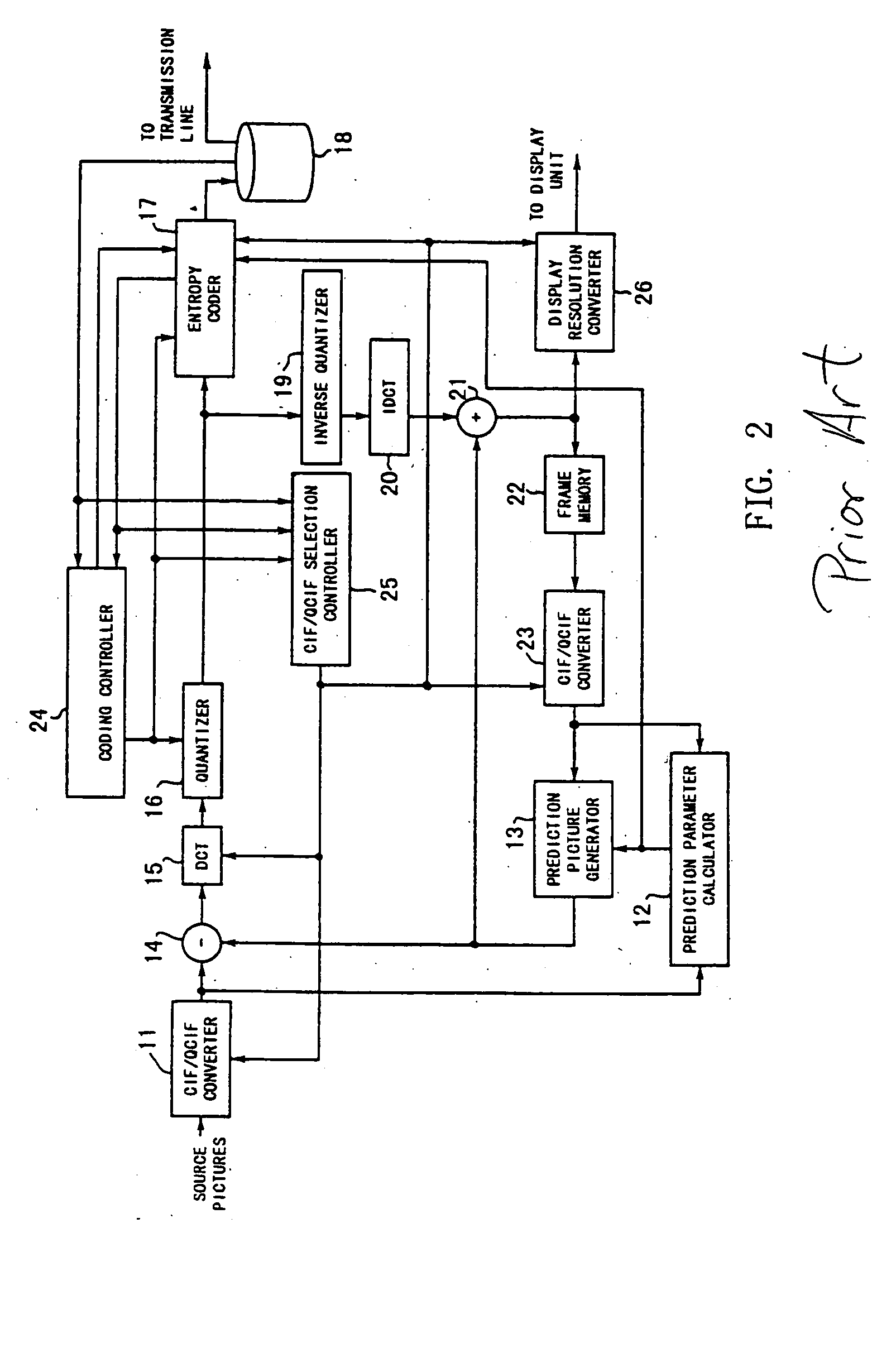System and method for the dynamic resolution change for video encoding
a dynamic resolution and video encoding technology, applied in the field of digital video encoding, can solve the problems of artifacts, decoding has to delay or drop future frames, and the video encoder cannot use a large number of bits (i.e. appreciably larger than the average bitrate) to encode each of a long sequence of successive frames, etc., and achieve good quality video reconstruction
- Summary
- Abstract
- Description
- Claims
- Application Information
AI Technical Summary
Benefits of technology
Problems solved by technology
Method used
Image
Examples
Embodiment Construction
[0027] Embodiments of the invention are described below in detail. The disclosed embodiments are intended to be illustrative only, since numerous modifications and variations therein will be apparent to those of ordinary skill in the art. In reference to the drawings, like numbers will indicate like parts continuously throughout the views.
[0028] The present invention is initially described in reference to FIG. 3. An exemplary embodiment of the present invention relates to a system for the predictive encoding of digital video sequences 300. The system 300 comprises a dynamic resolution switch controller means 10 for the dynamic selection of the resolution of a current frame being encoded, wherein the selection is based on the statistical and coding information of a plurality of frames. The current frame refers to the frame which is to be encoded next, that is, the frame whose encoding parameters are being determined at the current time interval.
[0029] Additionally included in the r...
PUM
 Login to View More
Login to View More Abstract
Description
Claims
Application Information
 Login to View More
Login to View More - R&D
- Intellectual Property
- Life Sciences
- Materials
- Tech Scout
- Unparalleled Data Quality
- Higher Quality Content
- 60% Fewer Hallucinations
Browse by: Latest US Patents, China's latest patents, Technical Efficacy Thesaurus, Application Domain, Technology Topic, Popular Technical Reports.
© 2025 PatSnap. All rights reserved.Legal|Privacy policy|Modern Slavery Act Transparency Statement|Sitemap|About US| Contact US: help@patsnap.com



